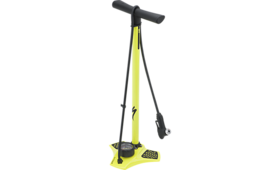Bike pump
From DDL Wiki
(→Manufacturing) |
(→Design for Manufacture and Assembly (DFMA)) |
||
| Line 132: | Line 132: | ||
==Design for Manufacture and Assembly (DFMA)== | ==Design for Manufacture and Assembly (DFMA)== | ||
| + | |||
| + | ***Introduction as to what DFMA is*** | ||
===Manufacturing=== | ===Manufacturing=== | ||
| Line 138: | Line 140: | ||
Below are some of the DFM Guidelines and the observations we made of how our competitor designed their product with those guidelines in mind and some areas we believe they could improve. | Below are some of the DFM Guidelines and the observations we made of how our competitor designed their product with those guidelines in mind and some areas we believe they could improve. | ||
| + | |||
====Positive DFM Features==== | ====Positive DFM Features==== | ||
| Line 159: | Line 162: | ||
''Avoid Tight Tolerances'' | ''Avoid Tight Tolerances'' | ||
* Uses flexible rubber o-rings to allow for larger tolerances while remaining airtight | * Uses flexible rubber o-rings to allow for larger tolerances while remaining airtight | ||
| + | |||
====Suggested DFM Improvements==== | ====Suggested DFM Improvements==== | ||
| Line 173: | Line 177: | ||
''Minimize Secondary & Finishing Operations'' | ''Minimize Secondary & Finishing Operations'' | ||
* Since parts are multifunctional, most would require at least would need a secondary threading operation | * Since parts are multifunctional, most would require at least would need a secondary threading operation | ||
| + | |||
===Assembly=== | ===Assembly=== | ||
The competitor product also exhibities many decisions that help simplify the assembly, including sub-assemblies, mistake-proof orientations, and low part count. However, there were some drawbacks we noticed, such as (INSERT DRAWBACKS). We found the biggest area for improvement was (INSERT AREA WITH BIGGEST ROOM FOR IMPROVEMENT AND WHY). | The competitor product also exhibities many decisions that help simplify the assembly, including sub-assemblies, mistake-proof orientations, and low part count. However, there were some drawbacks we noticed, such as (INSERT DRAWBACKS). We found the biggest area for improvement was (INSERT AREA WITH BIGGEST ROOM FOR IMPROVEMENT AND WHY). | ||
| + | |||
====Positive DFA Features==== | ====Positive DFA Features==== | ||
| Line 187: | Line 193: | ||
* One | * One | ||
* Two | * Two | ||
| + | |||
====Suggested DFA Improvements==== | ====Suggested DFA Improvements==== | ||
Revision as of 11:39, 16 September 2012
Contents |
Executive Summary
This will be a brief executive summary that describes the key findings and recommendations.
Lorem ipsum dolor sit amet, consectetur adipiscing elit. Ut elementum elit vel tortor scelerisque auctor. Donec urna dui, eleifend eget adipiscing vulputate, feugiat id nisl. Donec mattis, quam in tincidunt ullamcorper, orci tellus condimentum dui, aliquet faucibus risus nunc et nunc. Vestibulum metus justo, volutpat sed consequat eget, mollis sed neque. Maecenas dignissim hendrerit malesuada. Aliquam dictum gravida orci ut rutrum. Fusce eros lectus, accumsan sed rhoncus eu, tempor sed magna. In ac lacus urna, ut cursus nisl. Curabitur ac dui nisl, in imperdiet orci. Aliquam quam dui, tincidunt quis volutpat quis, convallis a ipsum. Suspendisse quis molestie lorem. Nunc vel magna commodo nunc viverra tempor id blandit neque. Donec nec elementum ligula. Cras accumsan, urna eget dictum varius, arcu nunc porttitor tortor, sit amet feugiat nisl elit vitae elit. Proin eget tellus lectus, tempus tincidunt augue. Sed sagittis iaculis orci, sit amet tempus dui tincidunt in.
Product Stakeholders
This is where we will identify major stakeholders (post-production) and list major product needs for each stakeholder.
Product Use Study
This is where we will document in detail how the product is used, step by step, and summarize findings from our user studies with photo documentation.
Product Mechanical Function
We will include some pretty diagrams and information about the mechanical function of our part.
Assembly
This is where we will have information/photo about the major assembly.
An exploded view of the floor bike pump will be inseted here... with all components labeled.
Sub-Assembly
We may need to include detailed sub-assembly photos and information here.
This is where we will insert exploded views of each internal sub-assembly with labeled components and a brief summary of each sub-assembly function.
Bill of Materials
We will also include a bill of materials for each major sub-assembly, right down to the very last screw. We will include pictures of the assembly with all components labeled.
Design for Manufacture and Assembly (DFMA)
- Introduction as to what DFMA is***
Manufacturing
The competitor product we analyzed displayed numerous positive manufacturing features that would minimize cost and complexity. The overall design is surprisingly simple, a result of combining features into single parts where possible, using only a few different materials, and minimizing the overall part count. (INSERT COMPONENT WITH BIGGEST ROOM FOR IMPROVEMENT AND WHY).
Below are some of the DFM Guidelines and the observations we made of how our competitor designed their product with those guidelines in mind and some areas we believe they could improve.
Positive DFM Features
Minimize Part Count
- Few fasteners, mostly everything screws together
- Many multifunctional components leading to less parts overall
Standardize Design Features
- The only screws in the system are all identical
Keep Designs Simple
- Piston shows a clever design to allow air into the pump on upstroke while eliminating lost air on downstroke, while still remaining very simple
Multifunctional Parts
- Many parts serve a specific purpose while also screwing into the next assembling acting as both a functional piece and connector
Ease of Fabrication
- Mostly composed of some type of plastic and steel.
Avoid Tight Tolerances
- Uses flexible rubber o-rings to allow for larger tolerances while remaining airtight
Suggested DFM Improvements
Standardize Components
- Since there are few fasteners, most parts are custom-made for this product
Keep Designs Simple
- Pressure gauge is very complex, needs fine adjustment and much protection
Ease of Fabrication
- The plastic parts are for the most part unique and would each need their own mold
Minimize Secondary & Finishing Operations
- Since parts are multifunctional, most would require at least would need a secondary threading operation
Assembly
The competitor product also exhibities many decisions that help simplify the assembly, including sub-assemblies, mistake-proof orientations, and low part count. However, there were some drawbacks we noticed, such as (INSERT DRAWBACKS). We found the biggest area for improvement was (INSERT AREA WITH BIGGEST ROOM FOR IMPROVEMENT AND WHY).
Positive DFA Features
Plastic Components
- One
- Two
Metal Components
- One
- Two
Suggested DFA Improvements
Plastic Components
- One
- Two
Metal Components
- One
- Two
Failure Modes & Effects Analysis (FMEA)
Sweet information from JR and Lauren shall populate this space...
FMEA will populate the space below...
Design for Environment (DFE)
Amber shall populate this space with some cool graphs and knowledge.
Lorem ipsum dolor sit amet, consectetur adipiscing elit. Ut elementum elit vel tortor scelerisque auctor. Donec urna dui, eleifend eget adipiscing vulputate, feugiat id nisl. Donec mattis, quam in tincidunt ullamcorper, orci tellus condimentum dui, aliquet faucibus risus nunc et nunc. Vestibulum metus justo, volutpat sed consequat eget, mollis sed neque. Maecenas dignissim hendrerit malesuada. Aliquam dictum gravida orci ut rutrum. Fusce eros lectus, accumsan sed rhoncus eu, tempor sed magna. In ac lacus urna, ut cursus nisl. Curabitur ac dui nisl, in imperdiet orci. Aliquam quam dui, tincidunt quis volutpat quis, convallis a ipsum. Suspendisse quis molestie lorem. Nunc vel magna commodo nunc viverra tempor id blandit neque. Donec nec elementum ligula. Cras accumsan, urna eget dictum varius, arcu nunc porttitor tortor, sit amet feugiat nisl elit vitae elit. Proin eget tellus lectus, tempus tincidunt augue. Sed sagittis iaculis orci, sit amet tempus dui tincidunt in.
Group Dynamic
Team Leader: Dinesh Ayyappan
DFMA Lead: Patrick Hogan
FMEA Lead: Jonathan Wong
DFE Lead: Amber Ohiokpehai
Wiki Page Programmer/Report Compilation: Lauren Milisits
References
This is where we should list any references that we used throughout the process of our report.



